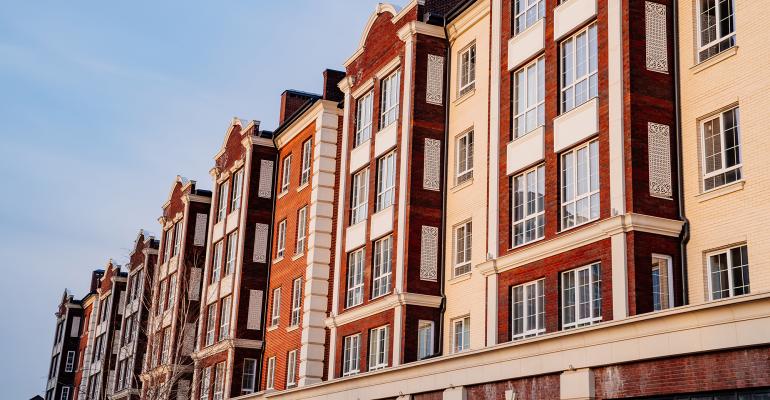Owners of apartments properties can get lower interest rates from Freddie Mac and Fannie Mae lenders if they promise to set rents that are affordable to moderate-income families.
These “affordable” rents may not even be lower than unrestricted, “market-rate” rents in some places—especially for older apartments. And landlords don’t need to join any complicated government, affordable housing programs. They simply have to promise to keep their rents relatively low for the life of their loans.
The process of getting these low-interest loans is the same as conventional financing. “Think of a standard Freddie Mac or Fannie Mae loan, subject to standard underwriting. The only thing borrowers need to do is pay their principal and interest—and keep the rents affordable,” says Dave Borsos, vice president of capital markets for the National Multifamily Housing Council, based in Washington, D.C.
Fannie Mae creates a new program for workforce housing
Fannie Mae announced its new Sponsor-Initiated Affordability program earlier this year for apartment properties where at least 20 percent of the apartments are priced to be affordable to people earning up to 80 percent of the area median income (AMI). It’s one response to ongoing concerns about the lack of affordable housing stock.
These apartment properties can get interest rates that are often 20 to 30 basis points lower than usual for permanent financing from Fannie Mae lenders, according to CBRE.
Apartment properties can earn even lower interest rates from Fannie Mae if they include a greater share of units priced to be affordable to people earning lower incomes.
Freddie Mac has also offered lower pricing to properties that are affordable to moderate-income residents since 2018 through its Social Investment Commitment program. To qualify, owners agree to set rents that are affordable to households earning 60 to 80 percent of AMI, assuming they pay no more than 30 percent of their income towards rent.
So far, Freddie Mac’s program has ensured affordable rents for 4,860 units at 29 properties, says Debby Jenkins, executive vice president and head of multifamily for Freddie Mac.
For example, in May 2020, Seattle-based Urban Housing Venture's Fund I acquired three Class-A, multifamily communities with 335 units in Bellevue and Kirkland, Wash. The fund financed the properties with low-interest, Freddie Mac loans and pledged to convert nearly half (40 percent) of the apartments to middle-income affordable housing targeting individuals and families earning 60 to 80 percent of AMI. They are part of a growing roster of investors that are interesting in investing in the space.
Federal official press Fannie and Freddie to focus on workforce housing
Federal officials have ordered Freddie Mac and Fannie Mae to purchase more loans to apartment communities that are affordable to moderate-income renters—and to buy fewer loans to luxury apartment properties—as a share of their total business. The Federal Housing Finance Agency (FHFA) limited the total volume of apartments loans Fannie and Freddie can buy in 2021 to just $70 billion each, or $17.5 billion per quarter. That’s a down from the old lending limits of $100 billion over five quarters, or $20 billion per quarter through the end of 2020.
FHFA also mandated that half (50 percent) of the volume of loans bought by Freddie Mac and Fannie Mae be loans to apartments affordable to people earning up to 80 percent of AMI, and 20 percent be affordable to people earning up to 60 percent of AMI.
Freddie Mac and Fannie Mae have already been making loans to workforce housing properties like these. “FHFA just incentivized them to do more of the normal business they have been doing for years,” says Kyle Draeger, senior managing director for CBRE Multifamily, working in the firm’s Boston offices. “It does dis-incentivize them from luxury housing.”
In recent years Freddie Mac and Fannie Mae lenders originated the majority of permanent loans to apartments properties—including class-A, luxury apartment properties.
FHFA’s directive focuses Freddie Mac and Fannie Mae back on their mission as “government-sponsored entities” to provide stability, liquidity and affordability to the housing markets, says Borsos.
“The industry had asked for something like this,” says CBRE’s Draeger. “It doesn’t overly constrain Freddie Mac and Fannie Mae.”





